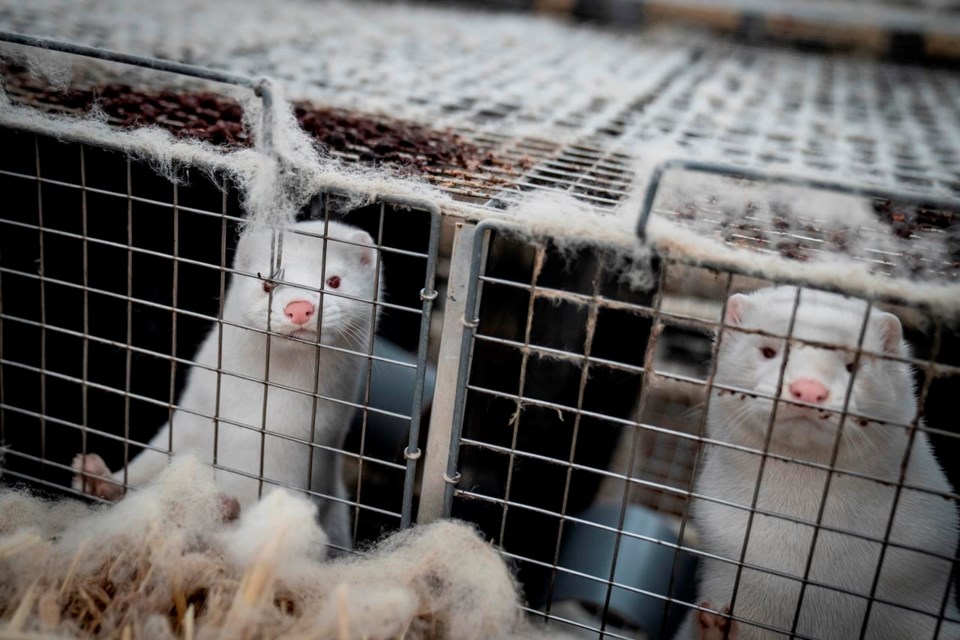COPENHAGEN, Denmark (AP) — Denmark's government said Friday that a temporary ban on mink breeding will expire Jan. 1, allowing mink production to resume in the country but at a ”significantly reduced" level than before the coronavirus pandemic.
The government nearly two years ago ordered a cull of millions of minks and banned their farming to minimize the risk of the small mammals retransmitting the virus to contain a mutated version that could spread to people.
At first the ban was set to expire at the end of 2021 but was extended for a year. As of Jan. 1, it will again be permitted to keep mink in Denmark.
It was not immediately clear whether there would be a cap on the number of animals per farm. There will be limits on the number of people allowed to visit farms, and farmers will be required to register the names of visitors.
The Environment and Food Ministry said health officials now think “there is a limited risk to public health by resuming significantly reduced mink production and by introducing infection prevention measures."
The government said the decision to lift the temporary ban was based on an assessment by the Statens Serum Institut, a government agency that maps the spread of diseases in Denmark.
Food, Agriculture and Fisheries Minister Rasmus Prehn and institute officials plan to meet later Friday with representatives of the Danish mink industry to “review the infection prevention measures for the industry.”
The government said veterinary and health authorities have drawn up a model with requirements for handling COVID-19 in mink herds that breeders must “implement and comply with in order to be able to keep mink again after the turn of the year.”
“There are absolutely no good reasons to reopen large mink farms with millions of animals crammed in small wire cages until they are killed for their fur,” said Britta Riis, head of Animal Protection Denmark. “It is bad for the animals, the environment and the climate.”
“Keeping mink in the existing cages is not acceptable,” she said and added that several European countries have either banned or are phasing out mink farming. On Thursday, Latvia became the latest country to ban mink farming from 2028.
Denmark was one of the world’s main mink fur exporters, producing an estimated 17 million furs per year. Kopenhagen Fur, a cooperative of 1,500 Danish breeders, accounts for 40% of global mink production. Most of its exports went to China and Hong Kong.
The 2020 decision to wipe out Denmark’s entire captive mink population stirred strong controversy, particularly as the necessary legislation for such a drastic move was put in place more than a month after the cull had started.
In June 2022, a Parliament-appointed commission harshly criticized the Danish government for its decision to cull millions of healthy mink. The report said Prime Minister Mette Frederiksen had been “grossly misleading” during a 2020 press conference when she announced that all mink — infected and healthy animals alike — should be culled. The report also criticized other top Danish officials.
Jan M. Olsen, The Associated Press




